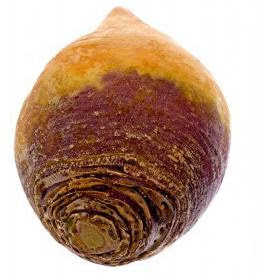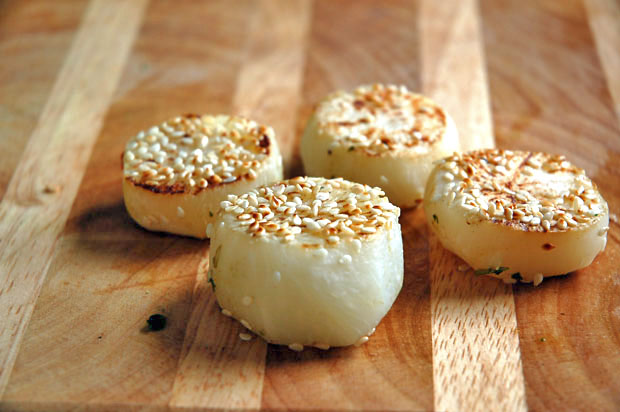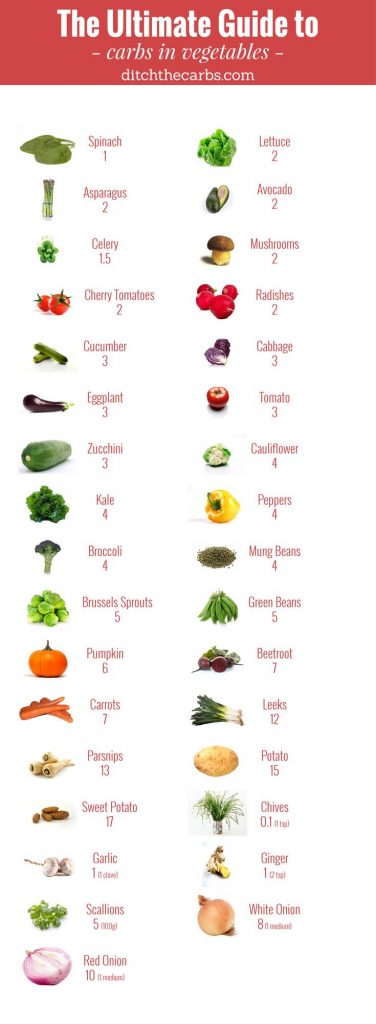Turnips, Swede, Rutabaga, Neeps : Low Carb Vegetables
Turnips are root vegetables that have less than a quarter of the carbohydrate of potatoes, and so are great choices for people who follow a low-carb diet. Turnips are members of the same plant family as cabbages, kale, broccoli, and cauliflower (cruciferous vegetables). The strength of the flavor varies, but becomes milder with cooking. Turnip greens are also nutritious and another option when you're looking for a leafy vegetable.
Do you find cruciferous vegetables to be bitter? You probably have a genetic variant that allows you to taste a certain chemical (phenylthiocarbamide) which tastes bitter.
Carbohydrate and Fiber Counts for Turnips:
½ cup of raw turnip cubes: 3 grams of effective (net) carbohydrate plus 1 gram of fiber and 18 calories
1 medium turnip, a little over 4 oz (¼ lb): 6 grams of effective (net) carbohydrate plus 2 grams of fiber and 34 calories
½ cup of cooked mashed turnip: 3.5 grams of effective (net) carbohydrate plus 3 grams of fiber and 25 calories
Health Benefits of Turnips:
Turnips are an excellent source of vitamin C, a very good source of fiber, and a good source of potassium, manganese, calcium, and vitamin B6. Turnips are also cruciferous vegetables (also called brassicas or cole crops).
Cruciferous vegetables are high in glucosinolates, which are phytonutrients thought to be helpful in protecting our bodies from certain types of cancers. Glucosinates also have antimicrobial and anti-inflammatory properties.
Above details from here
https://www.verywell.com/carb-information-for-turnips-2241834The turnip or white turnip, is a root vegetable commonly grown in temperate climates worldwide for its white bulbous taproot.
Small, tender varieties are grown for human consumption, while larger varieties are grown as feed for livestock.
In the north of England and Scotland, and eastern Canada (Newfoundland), turnip (or neep; the word turnip is an old compound of tur- as in turned/rounded on a lathe and neep, derived from Latin napus) refers to the larger, yellow rutabaga root vegetable, also known as the "swede" (from "Swedish turnip")
There is evidence that the turnip was domesticated before the 15th century BC; it was grown in India at this time for its oil-bearing seeds
One medium raw turnip (122 g) contains the following nutritional elements:
Calories : 34
Fat: 0.12
Carbohydrates: 7.84
Fibers: 2.2
Protein: 1.10
Cholesterol: 0
These details from here
https://en.wikipedia.org/wiki/TurnipSwede Wonderful Swede - also known as 'Rutabaga' or 'Neeps'
In our house the humble swede is so often part of our menu plans. Our children love it and the grandchildren like its slightly sweet taste. It is known under various names, depending on where in this world you live - so I thought why not give a little more detail for those of you who have not tried this wonderful vegetable.
Americans know it as "rutabaga". The Scottish call it "neeps" and serve it with haggis. The swede, a fairly recent root vegetable, is thought to have originated around the 17th century in Bohemia. In 1620 a Swiss botanist described the root vegetable, believed to be a hybrid of the cabbage and the turnip. By 1664 it was growing in England. A good source of vit.C, fibre, folate and potassium. Low in calories.Wash then peel thoroughly to remove the thick outer skin. Swede can be prepared and served in any of the methods used for potatoes. Swede can be added to soups, stews and casseroles. Use mashed swede instead of mashed potato it has a slightly sweet taste. Swede can also be made into fritters and pancakes. Collins Gem states 2.3 grams of carb per 100 grams. It doesn't spike blood sugar numbers like a potato may. Swede is just great, try it and see.
Above details from here
http://thelowcarbdiabetic.blogspot.co.uk/2015/08/swede-popular-delicious-and-low-carb.htmlWhy not put these vegetables on your shopping list soon!
All the best Jan



















